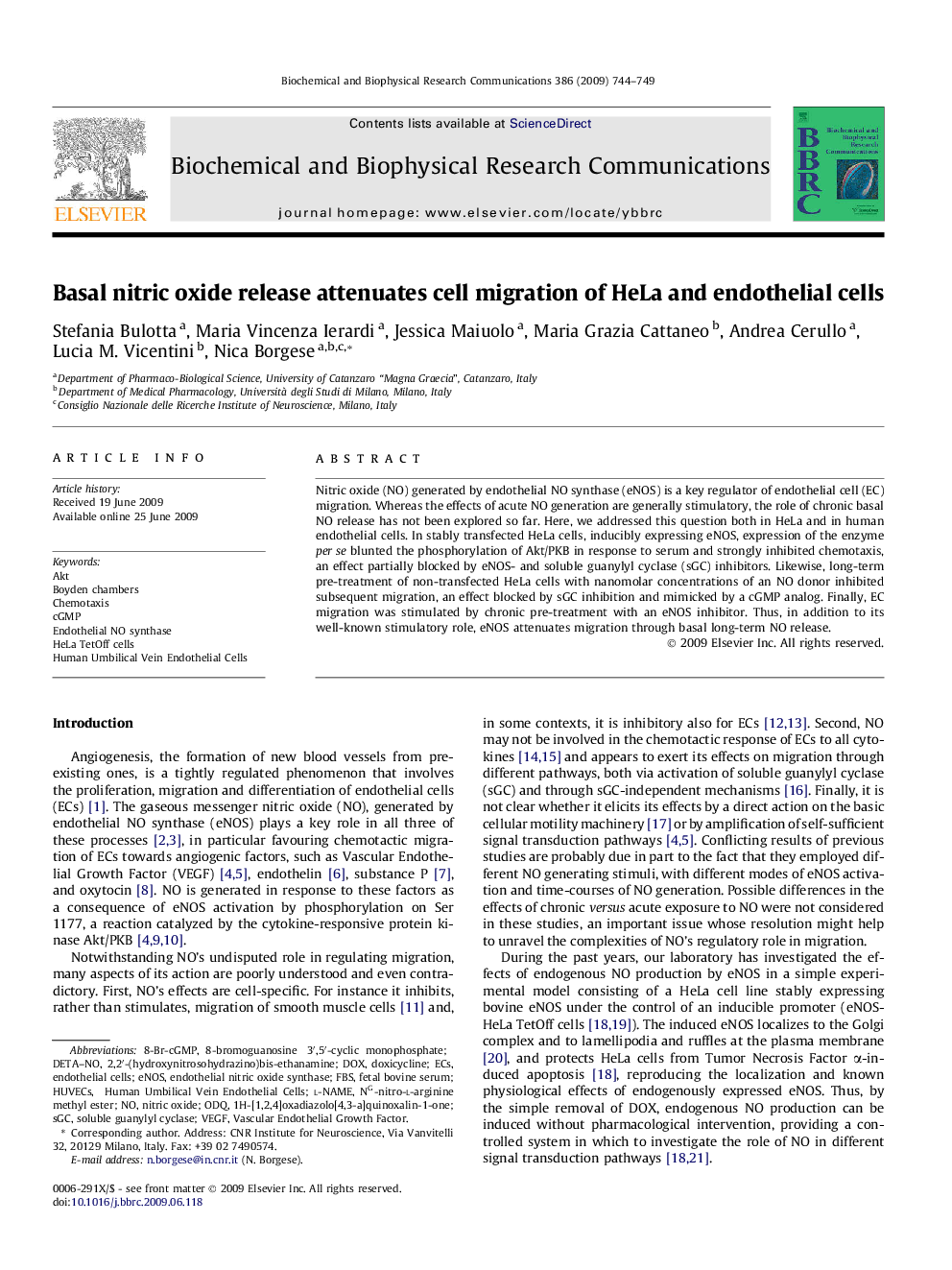| Article ID | Journal | Published Year | Pages | File Type |
|---|---|---|---|---|
| 10765812 | Biochemical and Biophysical Research Communications | 2009 | 6 Pages |
Abstract
Nitric oxide (NO) generated by endothelial NO synthase (eNOS) is a key regulator of endothelial cell (EC) migration. Whereas the effects of acute NO generation are generally stimulatory, the role of chronic basal NO release has not been explored so far. Here, we addressed this question both in HeLa and in human endothelial cells. In stably transfected HeLa cells, inducibly expressing eNOS, expression of the enzyme per se blunted the phosphorylation of Akt/PKB in response to serum and strongly inhibited chemotaxis, an effect partially blocked by eNOS- and soluble guanylyl cyclase (sGC) inhibitors. Likewise, long-term pre-treatment of non-transfected HeLa cells with nanomolar concentrations of an NO donor inhibited subsequent migration, an effect blocked by sGC inhibition and mimicked by a cGMP analog. Finally, EC migration was stimulated by chronic pre-treatment with an eNOS inhibitor. Thus, in addition to its well-known stimulatory role, eNOS attenuates migration through basal long-term NO release.
Keywords
FBS8-bromoguanosine 3′,5′-cyclic monophosphateODQNG-nitro-l-arginine methyl esterSGC8-Br-cGMPeNOScGMPHUVECSDOX1H-[1,2,4]oxadiazolo[4,3-a]quinoxalin-1-oneECsl-NAMEAktendothelial NO synthaseSoluble guanylyl cyclasefetal bovine serumHuman umbilical vein endothelial cellsEndothelial cellsendothelial nitric oxide synthaseVascular endothelial growth factorVascular Endothelial Growth Factor (VEGF)Nitric oxideChemotaxis
Related Topics
Life Sciences
Biochemistry, Genetics and Molecular Biology
Biochemistry
Authors
Stefania Bulotta, Maria Vincenza Ierardi, Jessica Maiuolo, Maria Grazia Cattaneo, Andrea Cerullo, Lucia M. Vicentini, Nica Borgese,
